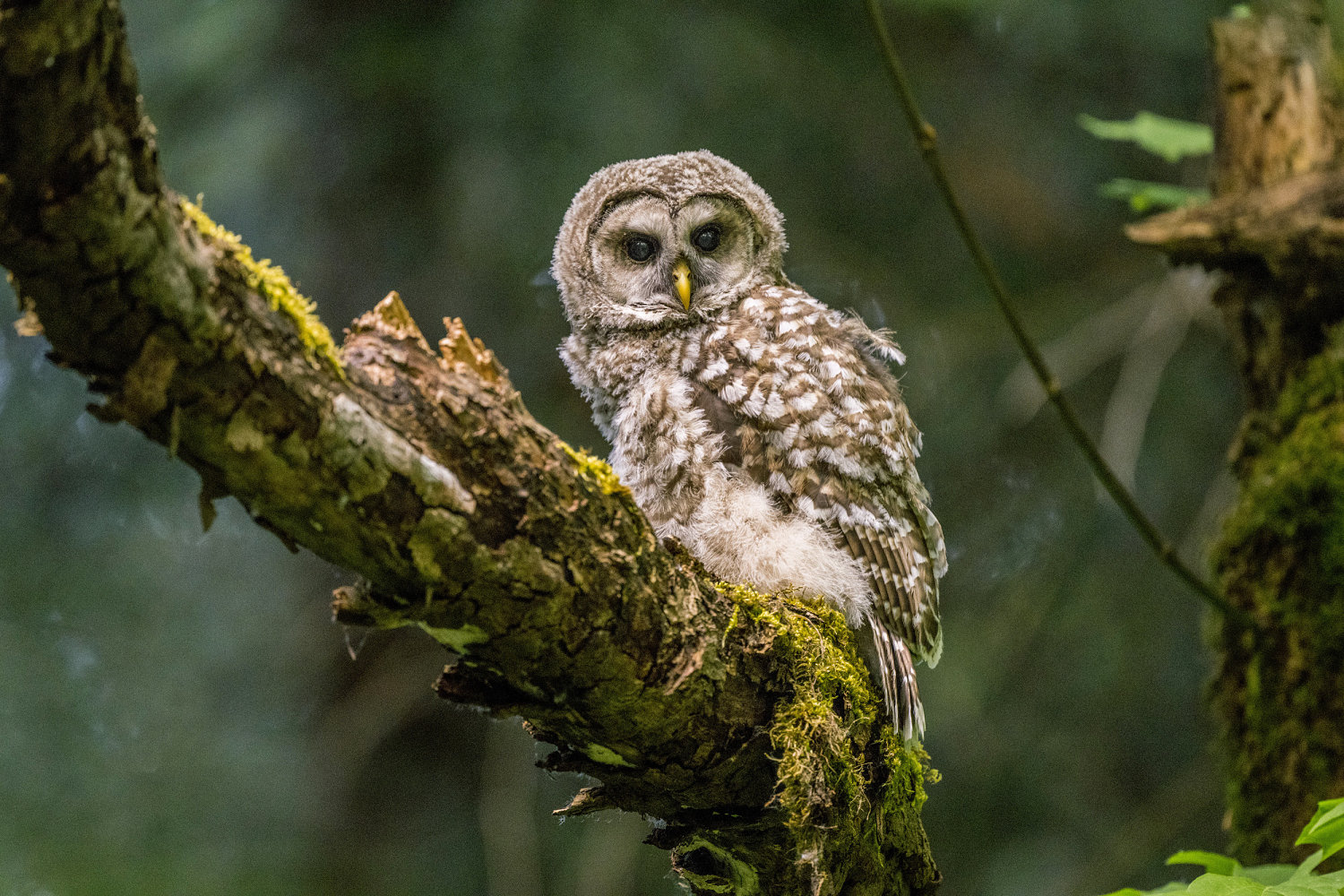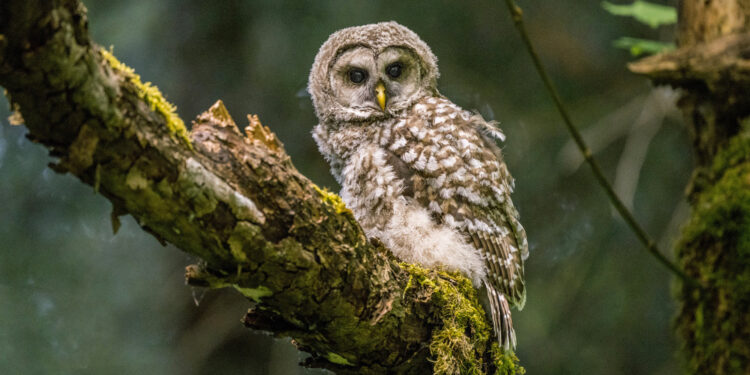
The U.S. Fish and and Wildlife Service is keeping its aim trained on the barred owl, hoping an effort to cull the species could save its close genetic relative.
In a final plan released Wednesday, the agency is proposing to kill as many as 450,000 barred owls over 30 years, despite opposition from some animal welfare activists and Washington state’s top public lands official.
The plan, released in a final environmental impact statement, is designed to prevent the extinction of the spotted owl, a threatened species that is being crowded out of its native territory by the slightly larger and faster-reproducing barred owl.
“We’re at a crossroads and we’ve now developed the science and analyzed everything,” said Bridget Moran, a deputy state supervisor for the USFWS in Oregon. “We have to manage the barred owl. There is time to protect spotted owls, but that window is closing.”
The barred owl, common in the eastern U.S., is not native to the west coast and likely arrived only because European settlers spread west. The species was first discovered in spotted owl territory in Washington state in the 1970s. The recent spread of barred owls has had a dramatic impact on spotted owl population in the forests along the west coast. The USFWS estimates it has declined by about 75% over the past two decades.
The wildlife agency’s final proposal calls for crews of professionals to broadcast a “territorial call” to attract barred owls and then to shoot them with shotguns. Public hunting of the birds would not be allowed, the proposal says.
The agency thinks spotted owls will rebound slowly if they face less competition from barred owls. In an experimental study funded by the USFWS and published in 2021, spotted owls had a 10% better chance at survival in areas where barred owls were removed.
Robin Brown, a Fish and Wildlife Service biologist who is the agency’s barred owl strategy lead, said the management plan won’t eliminate barred owls from the west coast altogether.
“Both species will remain,” Brown said, adding that the program would only eliminate about .5% of the nation’s barred owls.
The proposal to kill hundreds of thousands of barred owls has received a mix of criticism and support.
“Shooting hundreds of thousands of barred owls is a senseless and cruel management proposal,” said Jennifer Best, the wildlife law director for Friends of Animals, a Connecticut-based animal advocacy nonprofit that has opposed USFWS on this issue. “We will be reviewing the Final EIS and the final decision, once it comes out, to determine whether we will take legal action.”
Washington’s public lands commissioner, Hilary Franz, has questioned how much the plan will cost and whether it will carry unintended consequences, calling it an “extreme solution” in a letter to Secretary of the Interior Deb Haaland.
“There is no precedent for a successful wildlife-control program of this scale. While USFWS did not attach a cost for the plan, conservative estimates from outside sources put the cost estimate at $235,000,000 over the 30-year time horizon,” Franz wrote, adding that she was concerned the plan was “unworkable.”
(The cost estimate referred to which Franz referred is from a retired USFWS biologist, who is skeptical of the plan.)
Moran said the program’s costs depend heavily on which agencies and land managers participate, and that it’s not possible to estimate them yet.
Oregon’s Department of Forestry supported the final proposal, saying in a public comment that the plan acknowledged the “gravity of the proposed action and recognizes the complex threat” of barred owls.
The USFWS can make a formal record of decision in a month’s time. The barred owl is protected by the Migratory Bird Treaty Act and USFWS will need to seek a permit from itself to begin killing barred owls.







